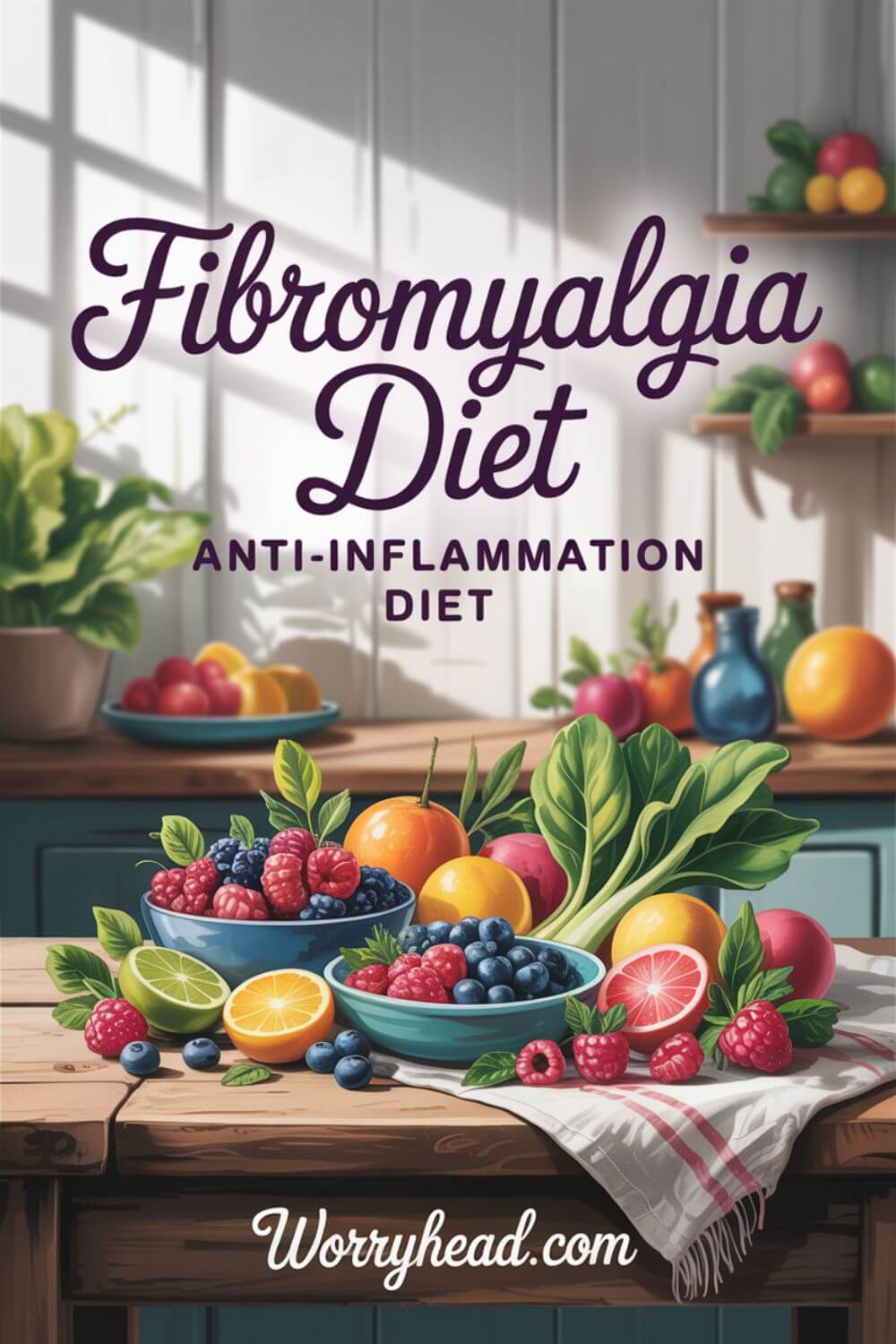Fibromyalgia Diet (Anti Inflammation Diet)
Have you ever wondered if a fibromyalgia diet could truly ease the pain, calm the inflammation, and give back even a little sense of control when your body feels like it’s working against you?
Yes, a carefully chosen fibromyalgia diet focused on anti-inflammatory foods can soothe flare-ups, reduce swelling, calm your nervous system, and even help your body feel lighter, steadier, and more resilient each day.
I’ve watched my wife live with the weight of chronic illness, battling fibromyalgia alongside endometriosis, and I’ve seen how food can either fuel her pain or bring her moments of comfort. She’s always the one caring for others first, but when she leans into gentle, nourishing choices, her body whispers back with gratitude.
Stay with me, because in the next sections I’ll share not just the science but also the lived experience of how diet becomes more than food—it becomes part of healing, part of hope, and part of feeling less alone in this fight.
Living with the Fibromyalgia Diet
When I first began to understand what the fibromyalgia diet really meant, it wasn’t about counting calories or obsessing over rules; it was about watching my wife struggle and wanting to find ways to make her life a little easier. Every flare-up felt like a storm rolling in, unpredictable and cruel, leaving her body aching and her mind exhausted.
I noticed early on that certain foods seemed to trigger more pain, while others gave her a softer landing after the storm. It wasn’t an overnight discovery – it took months of listening, observing, and learning alongside her. Each meal became less about filling a plate and more about creating a chance for relief, even if it was only slight.
For her, food became both medicine and comfort. Lean proteins, vegetables rich in color, and foods known to calm inflammation often brought moments of peace. I’ll never forget the first time she admitted that a change in her meals made the heaviness in her body feel a little less crushing. It wasn’t a cure, but it was hope.
As her husband, I wanted to protect her from everything, but since I couldn’t take away the illness, I tried to shape the environment around her. The kitchen became one of those safe places. Choosing ingredients carefully wasn’t about being perfect – it was about being present, about showing her that she wasn’t alone in navigating this painful journey.
This is what the fibromyalgia diet means to me, not a rigid plan, but an act of care. It’s an ongoing promise that food can be more than survival. It can be a way of easing her burden, one small bite at a time.
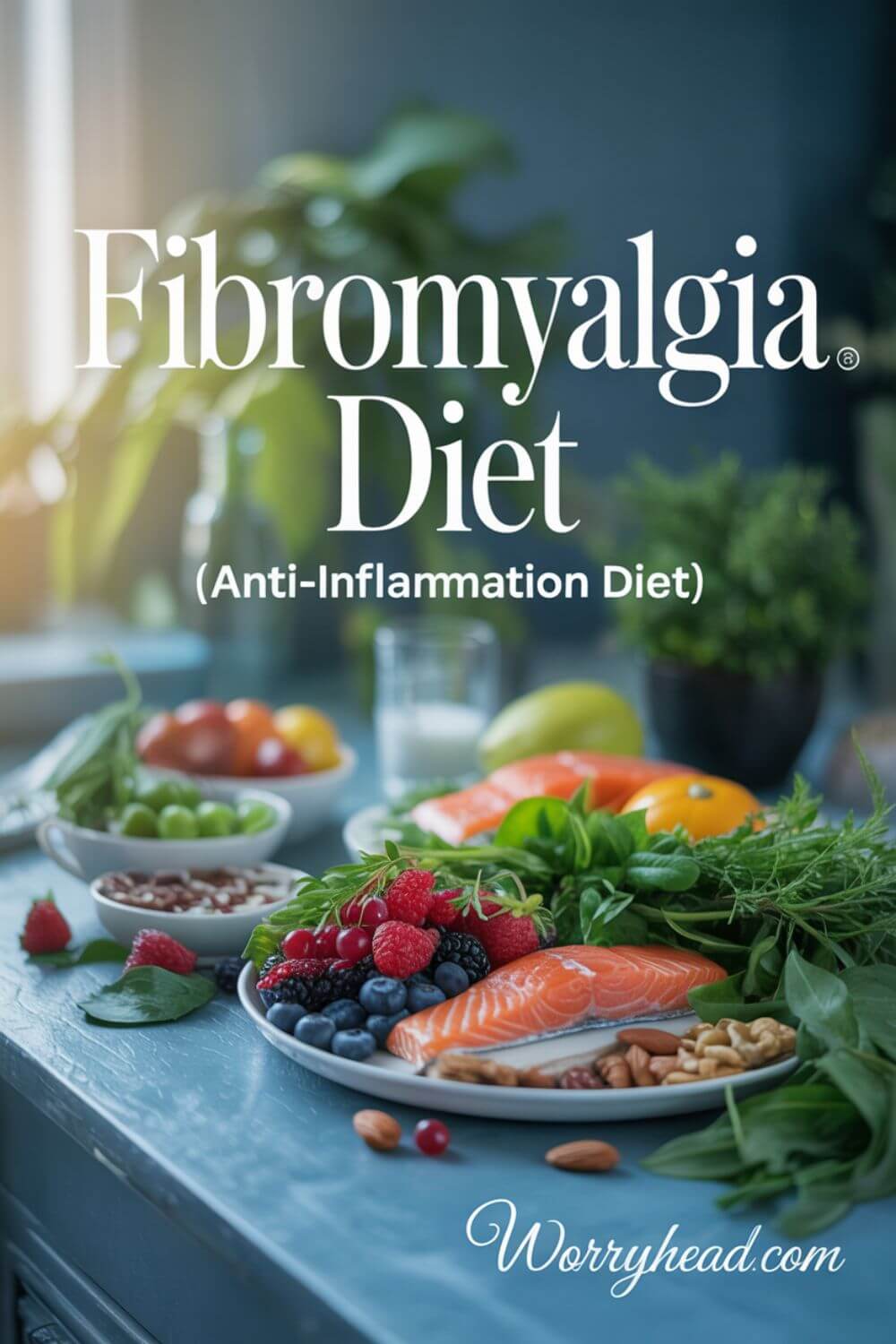
How Does the Fibromyalgia Diet Really Help?
When I first heard about changing diet for fibromyalgia, I was skeptical. Could food truly make such a difference when pain is so deeply rooted in the body?
Watching my wife live through endless flare-ups, though, taught me something powerful: what she ate didn’t cure her illness, but it shaped the way her body handled the fight. The fibromyalgia diet became more than just meals; it was a form of resilience.
There were days when she woke up already defeated, her muscles heavy as if weighed down by stones. On those mornings, when she leaned on processed foods or quick fixes just to keep going, the aftermath was always harsher. The pain lingered longer, the fatigue dug deeper, and her mood sank lower.
But when she leaned into an anti-inflammatory approach, the picture slowly shifted. It wasn’t about perfection, but it was about consistency and kindness toward her body.
The difference wasn’t dramatic in a single day, but over weeks and months, I could see the shift. Her flare-ups became a little shorter, her energy just a little steadier, and her nights of sleep a little less interrupted. And when you live with a condition that strips away so much, those “little” changes become life-changing.
I remember one evening we sat together, and she told me her body didn’t feel as inflamed as it usually did after dinner. It was a simple meal—salmon with roasted vegetables, nothing extravagant, but it gave her a moment of peace. That moment alone made every bit of effort in planning, shopping, and cooking worthwhile.
It also reminded me that healing isn’t only about pills or procedures, it’s about choices made day after day.
The diet didn’t erase her pain, but it gave her tools. It gave her a sense of control when everything else felt unpredictable. And maybe most importantly, it showed her that she could still nourish herself in a world where illness often takes so much away.
Of course, it’s not just about food. A fibromyalgia diet ties into lifestyle, emotions, and even identity. It’s about creating a rhythm that supports healing, about reminding her body that it’s not under attack with every bite. And for me, it was about supporting her in a way that made her feel less isolated in her suffering.
This is why I believe so strongly in the power of diet. It doesn’t claim to cure fibromyalgia, but it helps reclaim pieces of life that pain has stolen. It’s a way to steady the ground beneath her feet, even when the storm is fierce.
Next, we’ll go deeper into specific aspects of this diet and explore which foods, habits, and approaches can ease the weight of fibromyalgia and make daily life more manageable.
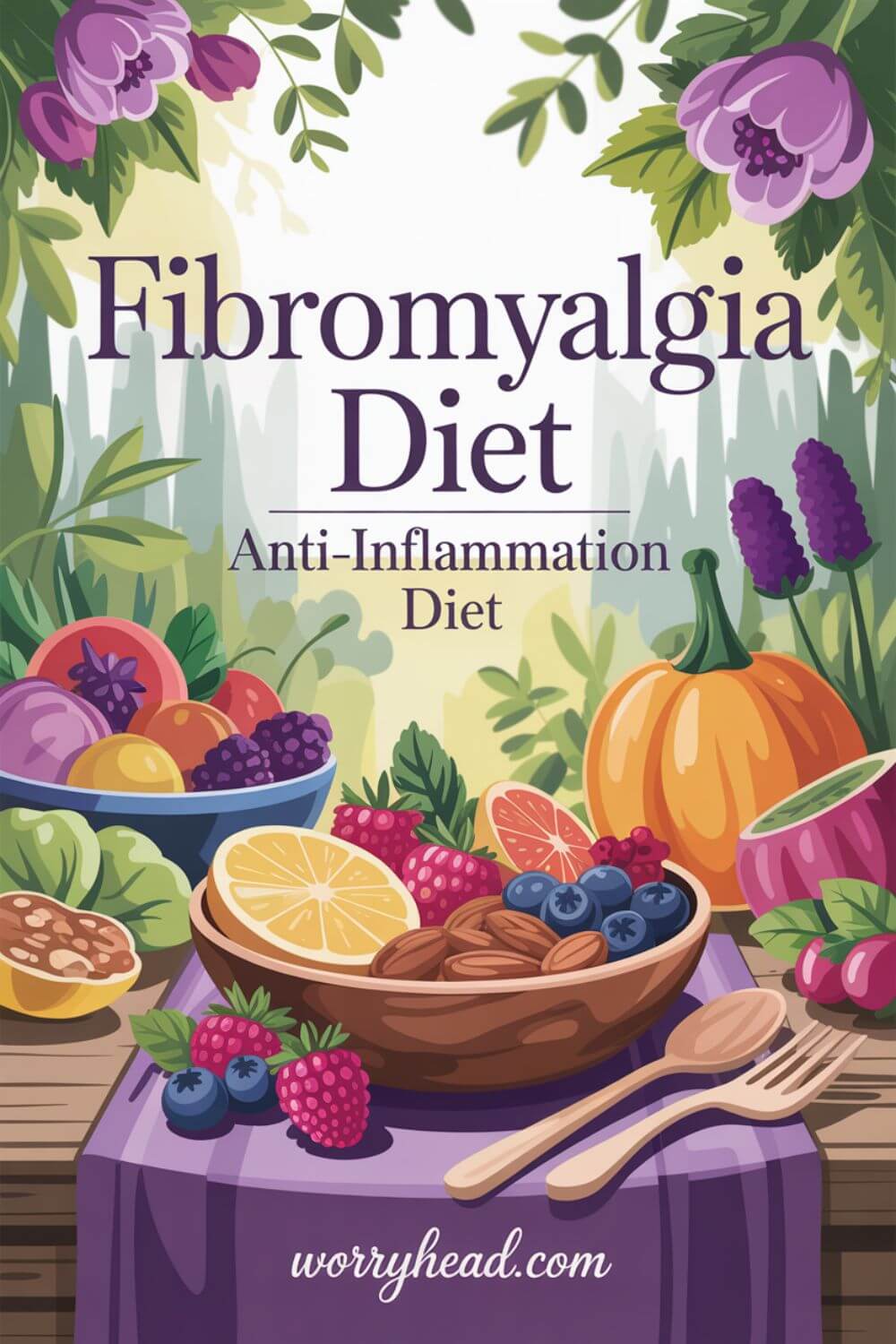
Anti Inflammatory Foods That Calm the Body
When my wife first tried shifting to anti-inflammatory foods, I didn’t expect much. But I soon realized these foods were like quiet protectors, gently calming the chaos inside her body.
Meals rich in colorful vegetables, berries, leafy greens, and omega-3-packed fish seemed to give her body a softer landing after the storm of a flare-up. It wasn’t magic, but it was noticeable – her swelling eased a little, her fatigue felt lighter, and her mood steadier. Watching her eat something nourishing and then smile because the aftermath wasn’t as cruel gave me hope.
It reminded me that food could be a kind of medicine without the sterile taste of pills. For her, it was a way to feel cared for, and for me, it was a way to show her that even small adjustments matter. It’s why anti-inflammatory foods became a cornerstone in her daily rhythm; they created moments of peace in a body at war.
The Role of Gluten Free Living in Fibromyalgia
The fibromyalgia gluten free diet was something we resisted at first. It felt overwhelming to cut out bread, pasta, and so many “comfort” foods she loved. But as we experimented, the changes spoke louder than the cravings. She noticed less bloating, fewer stomach issues, and a reduction in her brain fog.
Gluten wasn’t the root of all her problems, but removing it gave her body a chance to breathe without constant irritation. I’ll never forget how she described the difference, she said it felt like her mind was finally lifting from under water.
That one comment alone convinced me this shift wasn’t a trend; it was part of her healing. Supporting her in going gluten free wasn’t just about food; it was about showing her that she wasn’t giving up pleasures but gaining back parts of herself she thought she had lost.
Fibromyalgia Diet and Supplements That Support Healing
Supplements were never a first thought for us, but when her doctors suggested gentle additions like vitamin D, magnesium, and omega-3s, we saw how much they supported her. They weren’t miracle cures, but they filled the gaps her fragile body couldn’t keep up with on its own.
I remember how magnesium eased her muscle cramps, or how vitamin D during the dark winter months lifted her energy just enough to get through the day. For a woman who has been robbed of so much by chronic illness, even those subtle differences were powerful. It was a reminder that sometimes the body needs a little extra help, and that’s okay.
Combining supplements with the fibromyalgia diet gave her the chance to feel steadier, and for me, it was reassuring to know she had another layer of support.
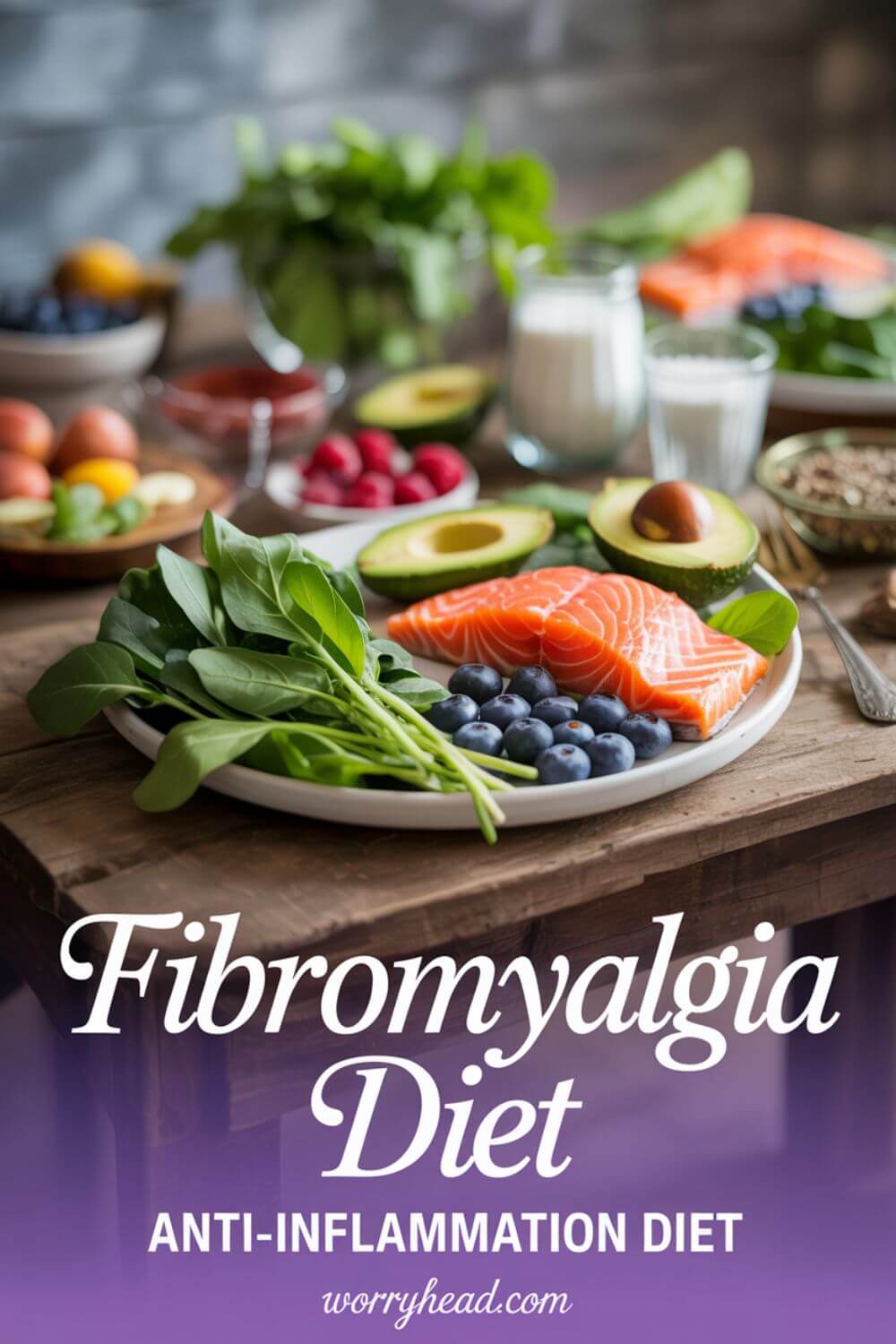
Foods to Avoid That Make Pain Worse
This was perhaps the hardest part, realizing that some of the foods she once loved were actually fueling her pain. Processed sugars, fried meals, and artificial additives often left her in agony. I could see the inflammation flare in her eyes, the way her body seemed heavier after she gave in to old cravings.
At first, it broke my heart to watch her struggle between wanting comfort and facing the price of it later. But gradually, she began to see avoiding these foods not as a punishment, but as a kindness to herself. It’s difficult because the world is full of tempting, quick-fix meals, but when the cost is more pain, it’s not worth it.
Supporting her through this shift meant learning to create alternative meals that felt comforting without leaving her body broken afterwards. It was hard work, but seeing her with a little less pain was worth every effort.
Detox and Cleansing in Fibromyalgia Diet
The idea of a fibromyalgia detox diet came to us when flare-ups were at their peak. We wanted to strip things back, to give her body a clean slate and reduce the toxic load it was carrying. We found that focusing on hydration, herbal teas, fresh fruits, and simple, unprocessed foods gave her a sense of renewal. It wasn’t extreme or punishing; it was gentle and intentional.
During those times, I noticed she had more clarity in her thoughts and a little more ease in her movement. For her, it wasn’t just about flushing out toxins; it was about feeling like she had some power over the illness that constantly stripped power away from her.
For me, it was another way to remind her that healing could be supported by simple, everyday acts of care, even something as small as what’s in her glass of water.
Emotional Healing Through Diet Choices
What struck me most as we went deeper into this journey was how diet wasn’t just about her body; it deeply affected her emotions. When her meals were balanced, nourishing, and supportive of her condition, she didn’t just feel physically lighter; she carried herself differently. Her depression lifted slightly, her anxiety loosened its grip, and she smiled more often.
These small victories became a lifeline for both of us. The fibromyalgia diet plan wasn’t only a physical tool, but it became an emotional anchor, helping her feel she had choices, that she could shape parts of her life despite everything illness had stolen. I could see her reclaiming herself piece by piece, and for me, that was priceless.
Food wasn’t just fuel anymore – it became part of her healing story.
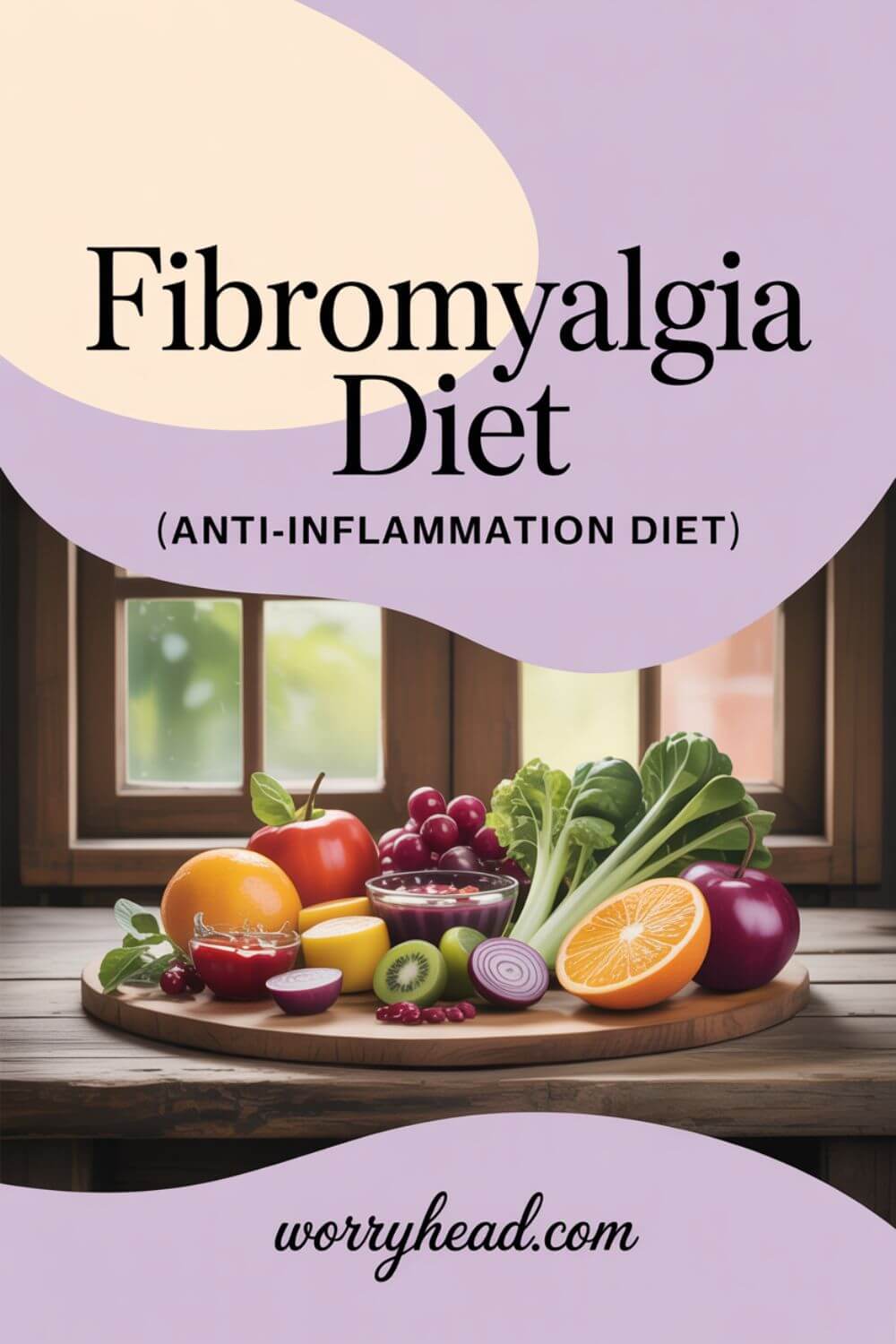
How to Find Balance within the Fibromyalgia Diet?
When I talk about the fibromyalgia diet, I’m not just sharing facts I’ve read or repeating something I saw online. I’m speaking from my own life, from sitting across the table and watching my wife struggle to lift her fork because her body hurt too much. I’ve seen the way certain meals leave her in agony, and I’ve seen the relief when we find the right foods that calm the fire inside her.
For me, this isn’t about perfection. It’s about balance. I don’t tell her she has to follow a strict plan every single day, because that would only add more pressure to a life already weighed down by pain. Instead, I remind her-and myself-that even small, consistent choices build strength over time.
A handful of blueberries, a cup of warm herbal tea, or swapping processed snacks for something nourishing may not seem like much, but I’ve watched them soften the edge of her suffering.
I won’t lie – there are days we both want to give up on it. Days when comfort food calls louder than reason, or when she’s too tired to think about what’s on her plate. But then we remember the nights when she sleeps more peacefully, or the mornings when her joints don’t feel as heavy, and it becomes clear why we keep trying. The diet is more than food – it’s a form of hope.
I’ve learned that supporting her isn’t about making her follow rules, but about walking beside her. Sitting down to eat the same meals, cooking together, or even just listening when she talks about what hurts, all of it matters. It tells her she isn’t fighting this alone. And maybe that’s what the fibromyalgia diet is truly about: not only reducing inflammation, but also reminding someone they are loved enough to be cared for in the details.
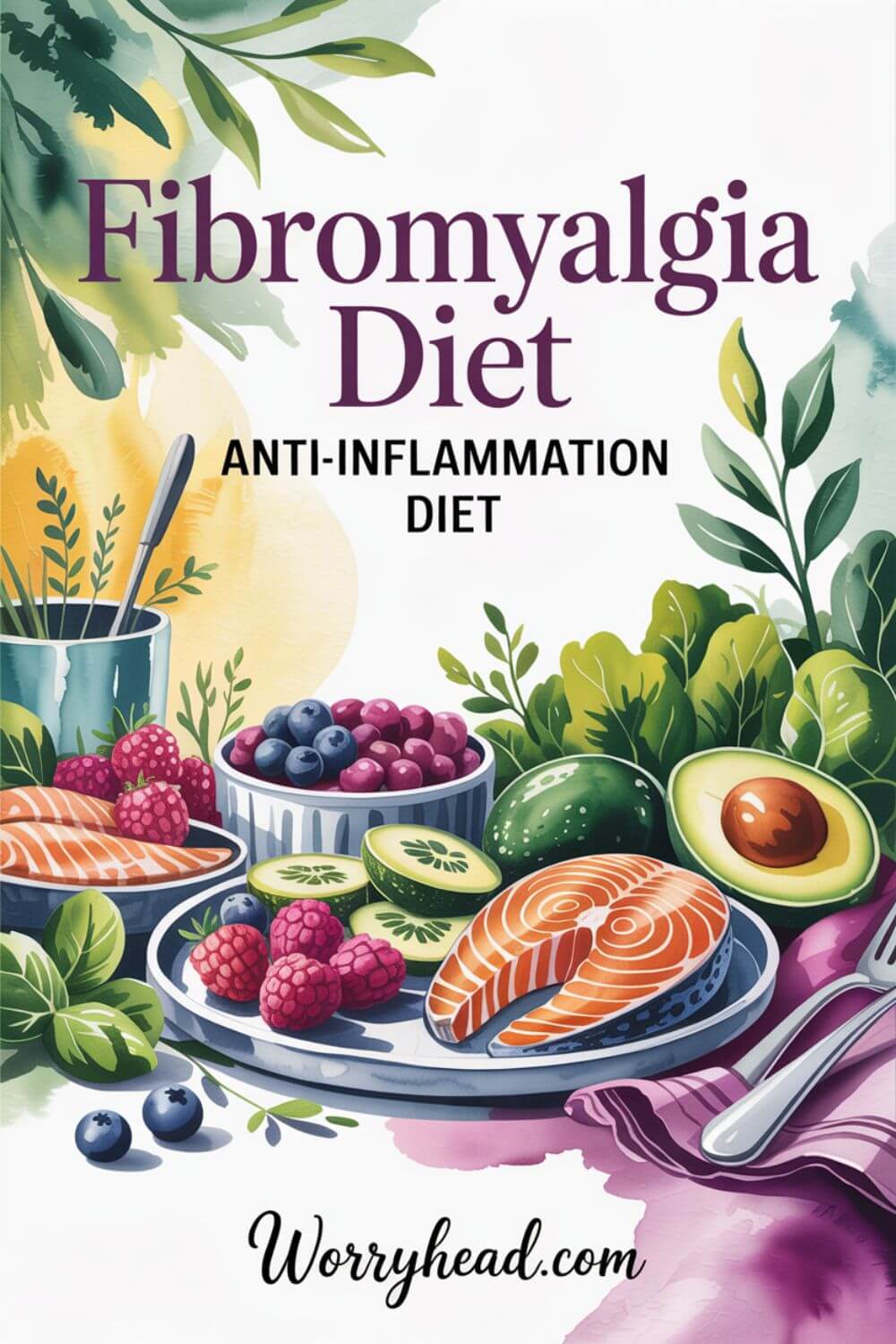
Why the Fibromyalgia Diet Matters in Daily Life?
The longer I’ve walked beside my wife through her illnesses, the more I’ve realized how much the fibromyalgia diet matters in the everyday moments most people don’t even think about. It’s not just about food – it’s about giving her body a chance to fight back against an invisible enemy.
I’ve watched her body betray her again and again, leaving her in tears on the couch, unable to move without pain. And in those moments, I feel powerless as her husband. I can’t take her pain away, but I can help shape the environment she lives in. For us, that begins with what we put on the table.
Every meal we choose carefully is like one small act of defiance against the illnesses that try to control her life. It reminds both of us that even if we can’t stop fibromyalgia, we can still find ways to soften its grip. That knowledge gives her a little bit of strength on days when she feels completely defeated.
When I prepare a meal that calms rather than inflames, I see the difference in her face; the tension eases, her energy returns just enough to talk, laugh, or simply rest without being consumed by pain. Those are the victories that matter most, because they give us back pieces of a normal life together.
And this is why I do what I do, why I share our story, why I build these blogs, and why I spend hours learning. It’s not just about fibromyalgia or endometriosis or even diet. It’s about showing others, especially men who feel helpless, that there are ways to love someone in the middle of their suffering.
For me, the fibromyalgia diet isn’t just about food. It’s about love, protection, and giving her the safest life I can, even when the illness tries to take that away.
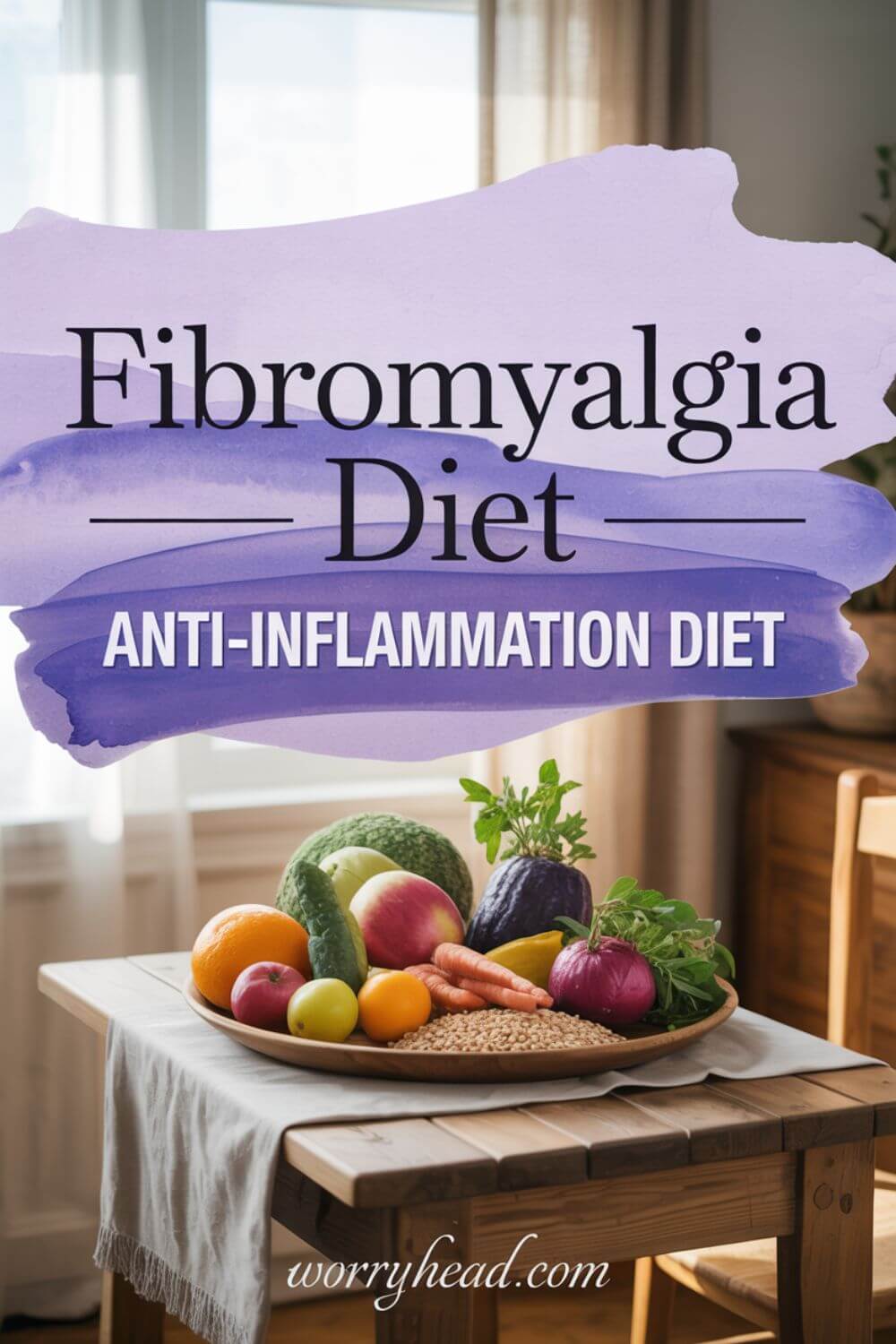
Morning Choices That Shape the Day
The mornings are often the hardest for my wife. She wakes up already exhausted, her muscles stiff and her head foggy. I’ve seen how the first thing she eats can either set the tone for the whole day or drag her further down. A simple breakfast built around the fibromyalgia diet, like oats with berries, chia seeds, or a warm cup of green tea, has made a difference we can both feel.
When she eats something heavy, full of sugar or processed flour, it’s like adding bricks to her body before she’s even stood up. But when her mornings start with anti-inflammatory foods, the day feels a little lighter, her mood steadier, and her energy more sustainable.
For me, making sure she has those options ready is not just about food, it’s about giving her a fighting chance to face the day.
Small Acts of Care Through Cooking
Cooking used to feel like a chore, something to rush through at the end of the day. Now it has become an act of care, a way I can show her love when words fall short. When I chop vegetables, simmer broths, or prepare meals rich in lean proteins and anti-inflammatory spices, I’m not just making dinner, I’m fighting alongside her.
There’s something healing in the process itself, in slowing down and being intentional. I’ve learned that a carefully prepared meal says more than any reassurance I could give with words. It tells her she matters, that her body deserves gentleness, and that she isn’t in this alone. The kitchen, for us, has become one of the places where healing begins, long before the food reaches her plate.
When Cravings Clash With Healing
One of the hardest parts of the journey has been dealing with cravings.
My wife loves sweets, especially chocolate, and there are days when the desire for comfort food collides with the reality of what it does to her body. At first, I struggled with how to support her: should I remind her of the consequences, or let her enjoy a moment of escape? Over time, I realized it wasn’t about strict rules but about balance.
We found alternatives such as dark chocolate, fruit-based desserts, and naturally sweet foods that still gave her joy without triggering the worst flare-ups. Supporting her in those moments isn’t about control; it’s about compassion.
It’s about recognizing that living with illness already takes so much away, so food should feel like a gift, not another punishment.
Fibromyalgia Diet as a Shared Journey
Perhaps the most important part of this diet has been sharing it together. If I sat down with pizza while she ate a plate of vegetables, she would feel isolated, punished, and left out.
So I made the decision early on that this wasn’t “her diet”, it was ours. Eating the same meals, cutting out the same triggers, and learning about foods for anti-inflammation together created unity instead of division. It also deepened our bond, because every meal became an opportunity to say, without words, “I’m with you in this.”
The diet turned into something much bigger than nutrition – it became part of the way we live, side by side, choosing daily to walk through her pain together.
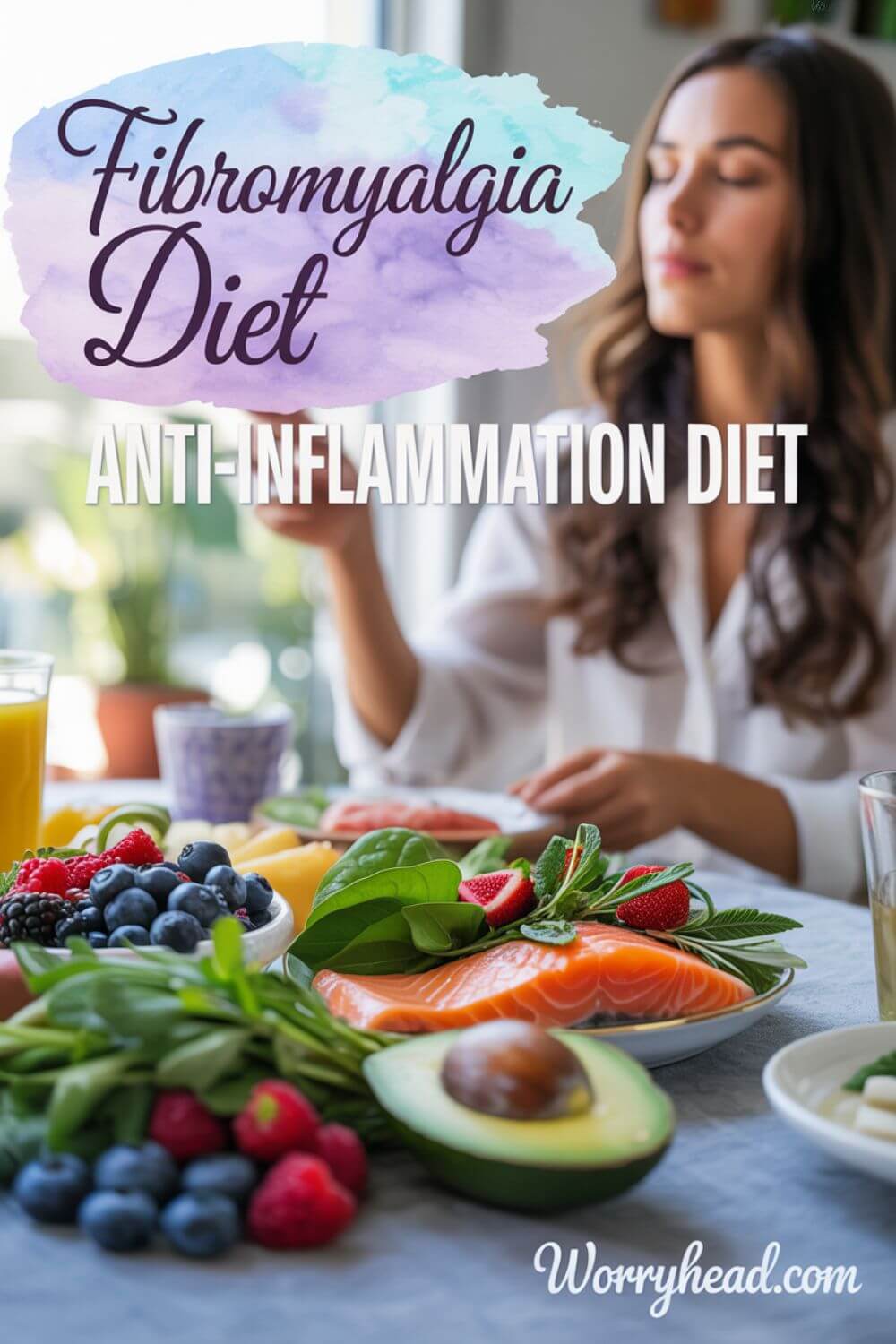
Living the Fibromyalgia Diet Every Day
For me, living with the fibromyalgia diet isn’t about following a perfect plan written on paper. It’s about the reality of sitting across from my wife at the dinner table and wanting to see less pain in her eyes. I’ve learned that food becomes more than nutrition when someone you love is hurting; it becomes part of their survival, their healing, their daily hope.
I talk to her often about how proud I am when she chooses foods that nourish instead of inflame, but I never push her.
This illness already dictates so much of her life that the last thing she needs is another set of rigid rules. Instead, I remind her that even small, intentional choices build a foundation for her body to lean on. One meal won’t cure her, but it might help her sleep better that night. One day of balance won’t erase the illness, but it might give her enough energy to laugh with me, and those moments mean everything.
What makes this diet powerful for us is not just the science of anti-inflammatory foods, but the love behind them.
Every grocery list, every meal I prepare, every substitution we make together, it all carries the message that she isn’t alone. It says that her health, her comfort, and her life matter enough to be fought for in the quiet, ordinary details.
This is what I hold onto: food will not take her illness away, but it can give her pieces of herself back. And if I can play a role in that – if I can help her feel even a little safer, calmer, and more in control, then every effort is worth it.
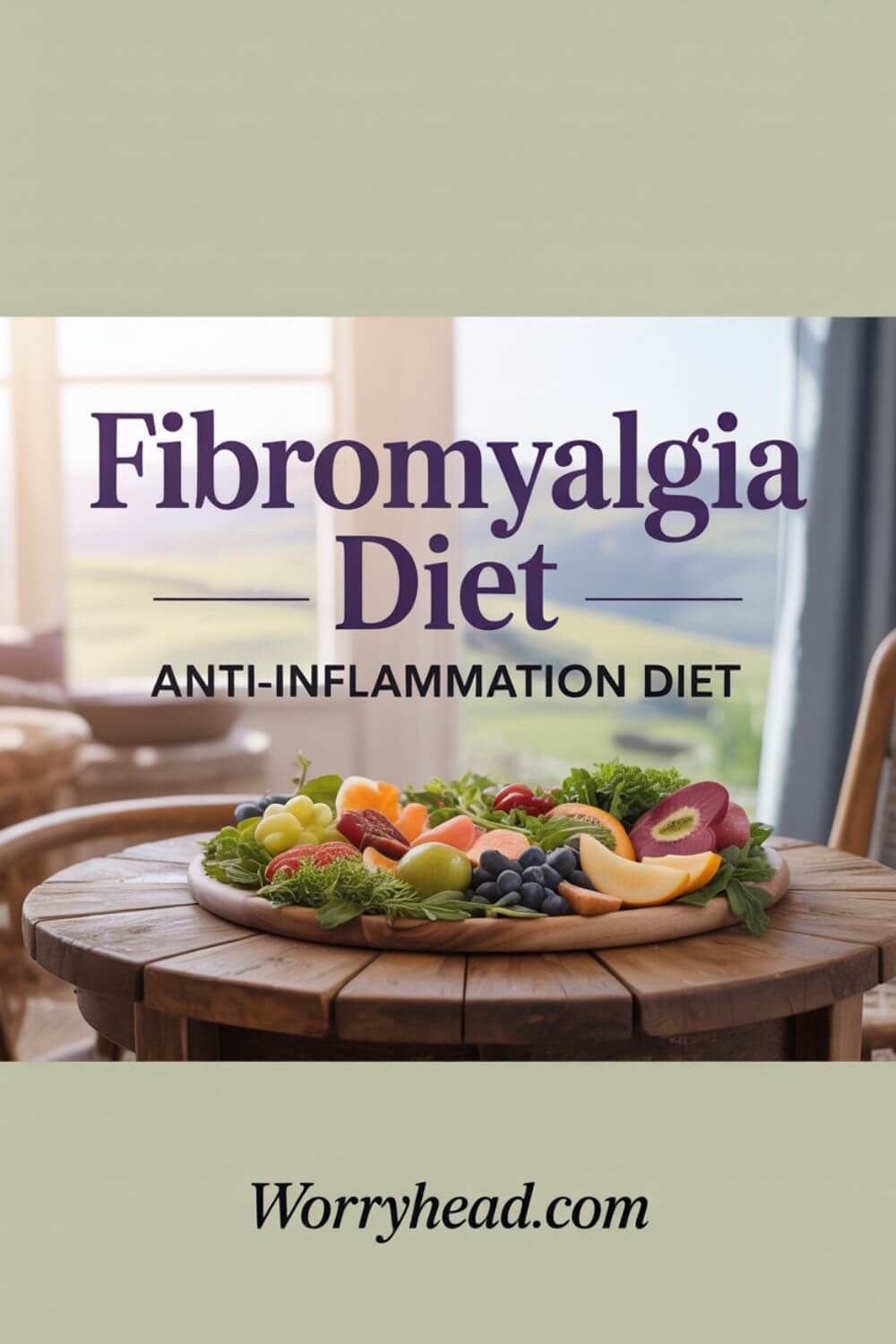
Building a Gentle Routine With Food
What I’ve learned living alongside my wife’s illness is that structure brings safety. A gentle routine with meals helps her body feel less overwhelmed. Instead of skipping meals or eating on impulse, we plan her day around small, nourishing foods that don’t spike her pain.
A smoothie rich in berries and greens mid-morning, a bowl of lentil soup for lunch, or roasted vegetables with salmon at night. These simple rhythms remind her body that it’s cared for. It’s not about rigid timing, but about consistency, and that has made her flares feel less chaotic.
For her, this routine isn’t just food, it’s reassurance. It’s knowing she doesn’t have to make big decisions when she’s exhausted. For me, preparing these meals is a way of telling her, “I’ve got you covered,” even when the illness tries to strip her of control.
Hydration as Part of Healing
Something that surprised me early on was how much water and hydration mattered. When my wife was dehydrated, her pain felt sharper, her fatigue heavier, and her mood more fragile. Incorporating hydration into the fibromyalgia diet became a quiet but essential part of her healing.
We added herbal teas, infused water with lemon or cucumber, and warm broths that soothed her body and mind. These small, steady acts helped her feel grounded. Hydration is often overlooked, but for her, it became one of the most powerful tools to calm inflammation and ease stiffness.
Watching her body respond to something so simple showed me that healing isn’t always about complicated solutions, it’s often found in the ordinary choices repeated with love.
The Importance of Anti-Inflammatory Spices
One of the most beautiful discoveries was how spices like turmeric, ginger, and cinnamon supported her.
These weren’t just flavors to brighten a dish; they became quiet warriors in her daily battle with pain. I’d sprinkle turmeric into soups, ginger into teas, or cinnamon into her oatmeal, and over time she noticed less swelling and a softer edge to her pain. It felt almost symbolic, as if nature had hidden little remedies in the foods we often overlook.
For her, these spices became part of her toolkit. For me, they were another way to show that healing doesn’t always come from a doctor’s prescription – it can also come from the earth, shared in a warm meal at the kitchen table.
Learning From Setbacks Without Guilt
Not every day is perfect. There are times when she gives in to old cravings, or when pain makes cooking impossible, and we reach for easier, processed meals.
Those days used to leave her with guilt, feeling like she had failed. But what we’ve learned is that setbacks don’t erase progress. One slip doesn’t undo weeks of care. What matters is compassion – reminding her that she’s human, and that every choice tomorrow is another chance to support her body. This mindset shift has been just as important as the food itself.
By removing guilt, we make room for healing. I tell her often, “You’re not failing, you’re surviving, and that’s enough.” And slowly, she’s begun to believe it.
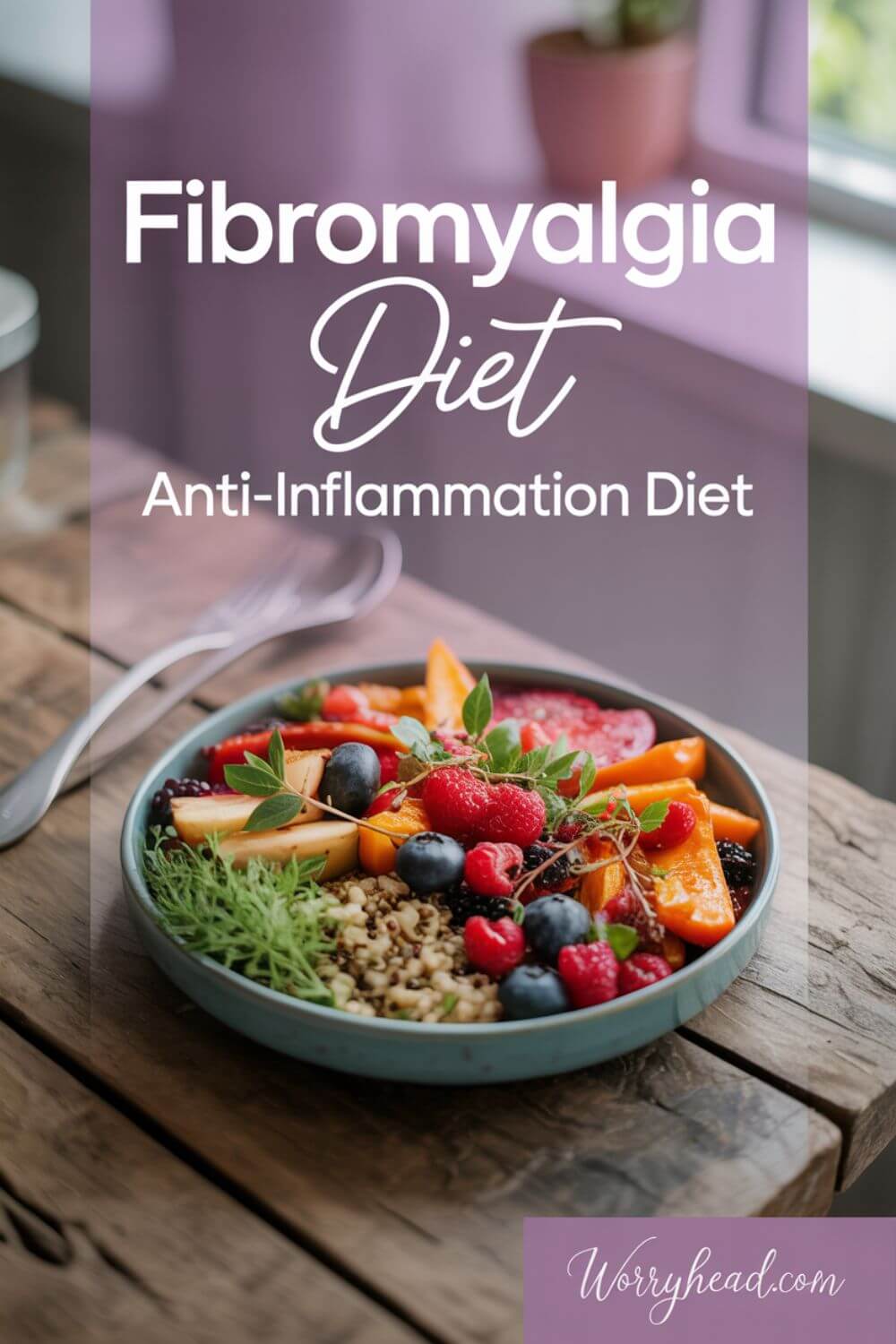
Fibromyalgia Diet and Mental Health Connection
The link between food and her mental health has been impossible to ignore.
When her meals are balanced and anti-inflammatory, her anxiety softens, her mood steadies, and her depression feels less crushing. But when she eats processed foods or too much sugar, her emotions spiral more easily.
The fibromyalgia diet plan has shown us that mental health and physical health are not separate; they’re deeply connected. For her, this realization brought a sense of power back.
She could shape her mental space through what she ate. For me, it was a reminder that the smallest act of care, preparing a nourishing meal, could ripple far beyond her body and into her heart and mind.
Food as an Anchor in Flare-Ups
When a flare strikes, everything feels out of control. She can’t move without pain, her thoughts scatter, and even the simplest tasks become impossible. In those moments, food becomes an anchor.
Gentle soups, smoothies, and easily digestible meals keep her nourished without overwhelming her system. It’s not just about calories, it’s about comfort and safety. These meals tell her body that even in the storm, she is supported.
For me, preparing these foods during flares has been one of the most emotional acts of care. It reminds me that while I can’t take her pain away, I can hold her steady until the wave passes.
Reclaiming Joy Through Meals
Living with chronic illness can strip away joy, leaving every day feeling like a battle. That’s why finding joy in food matters so much. We began experimenting with new recipes that fit within the fibromyalgia inflammation diet, making meals exciting instead of restrictive.
Discovering a new dish she loved became a celebration, a way of reclaiming life from illness. Cooking together also brought laughter back into our kitchen. Instead of food being another reminder of what she couldn’t have, it became a place to create happiness again.
For me, these moments are proof that diet isn’t just about survival – it’s about rebuilding pieces of a joyful, shared life.
Fibromyalgia Diet as a Lifelong Journey
One of the hardest truths we’ve accepted is that this isn’t a quick fix.
The fibromyalgia healing diet is a lifelong journey, something that shifts with her body’s needs over time. There are no shortcuts or instant results, only the daily choice to keep showing up for her health. But instead of seeing that as discouraging, we’ve learned to see it as a rhythm – a way of living that puts her care at the center.
Every choice is a step, every meal is a reminder, and every small improvement is a victory. For me, this journey isn’t about finding an endpoint. It’s about walking beside her for as long as it takes, reminding her that she never has to face it alone.
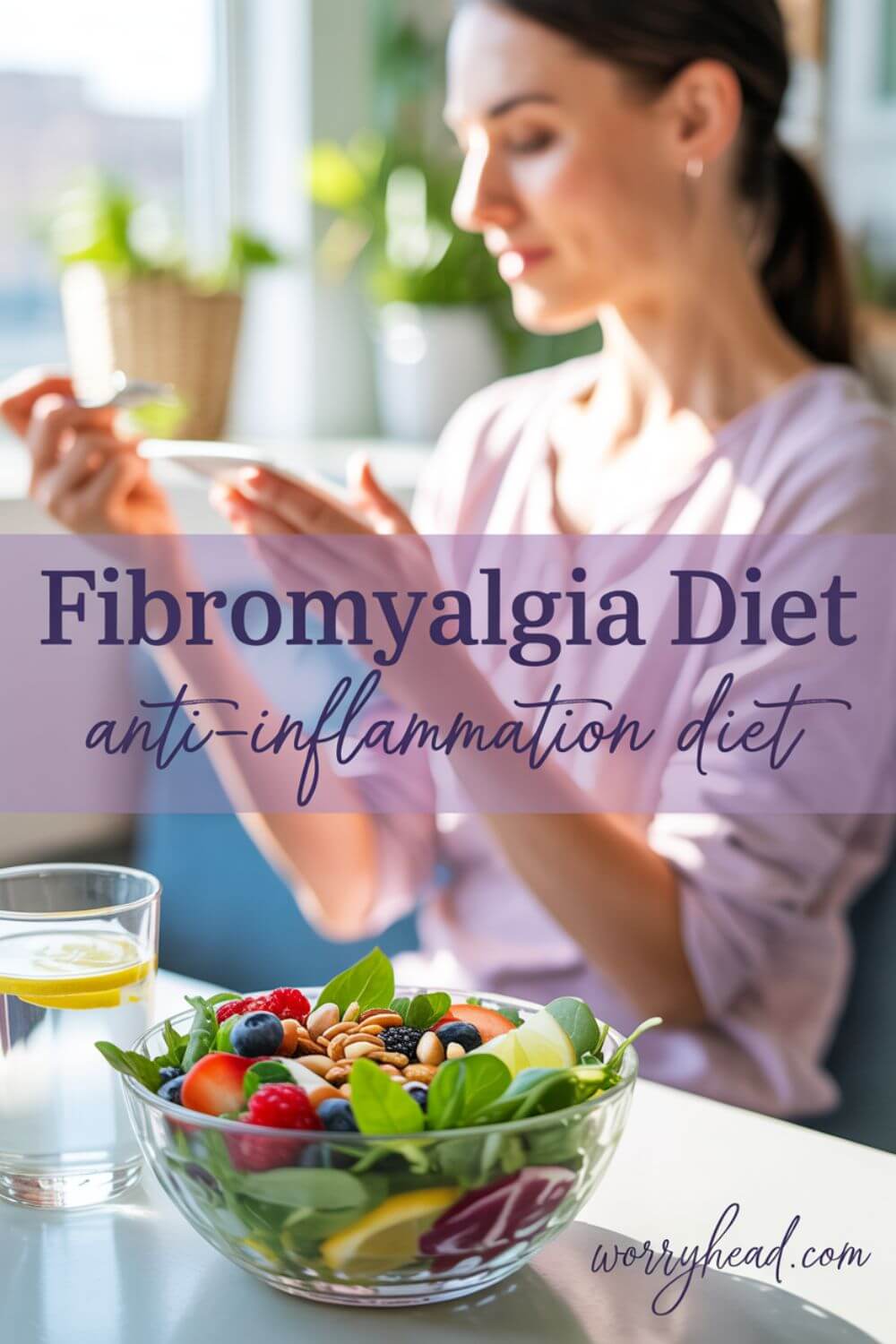
Final Word on the Fibromyalgia Diet
When I look back on the years of walking alongside my wife through her illnesses, I can honestly say the fibromyalgia diet has been one of the quietest yet most powerful tools we’ve discovered. It has never been about miracles or instant cures because anyone living with fibromyalgia knows those don’t exist.
Instead, it has been about small acts of care that, when woven together over time, create real change.
I’ve seen firsthand how certain foods can either fuel her suffering or ease her burden. Processed sugars, fried meals, and heavy, artificial foods almost always left her body inflamed, her mind foggy, and her spirit weighed down.
On the other hand, meals rich in omega-3 fatty acids, leafy greens, berries, and naturally anti-inflammatory spices gave her relief, clarity, and even moments of joy. It was never about perfection, but about patterns, the gentle rhythm of choosing healing over harm, day by day.
This diet also gave her something deeper than physical relief: it gave her back a sense of control. Fibromyalgia often robs people of that. It makes them feel helpless, trapped in a body that won’t cooperate. But with food, she found a space where her choices mattered.
She could influence how her body responded, even if only slightly. That power, that agency, is priceless for someone who feels like their illness dictates every part of life.
For me, as her husband, the diet became more than nutrition; it became love made visible. Cooking, shopping, preparing meals with intention, even sitting down to eat the same foods alongside her, all of it became a language of care. It told her, “You are not alone. I will walk through this with you.”
And I believe that is what makes this journey sustainable, not just the foods on the plate, but the support behind them.
I don’t want anyone reading this to think the fibromyalgia diet will erase pain completely. It won’t. But it can soften the edges of it. It can bring more stable days, fewer flare-ups, and a little more peace of mind. Sometimes, that’s all you need to keep going to wake up with hope instead of despair, to feel light where there was only heaviness.
So if you are living with fibromyalgia, or supporting someone who is, know this: food can be part of your fight. It won’t solve everything, but it will help you carve out moments of relief in a world that often feels merciless.
It’s about giving yourself compassion through what you eat, and about surrounding yourself with people who love you enough to fight for you in the details.
For us, the fibromyalgia diet has become not just a way of eating, but a way of living—a way of showing up for one another, of building resilience, and of reclaiming joy, one meal at a time.
When I think of all the nights spent in pain and all the small victories food has given us, I know this truth: healing doesn’t always come in grand gestures. Sometimes it comes in the quiet rhythm of a kitchen, the warmth of a shared meal, the steady presence of someone who refuses to give up on you.
That is the heart of the fibromyalgia diet – it is not just food, but love, hope, and endurance, served daily.
The fibromyalgia diet will not erase the illness, but it can soften the pain, calm the body, and restore small pieces of control. For my wife, it became a lifeline of hope, and for me, it became a way to love her in the details, one meal at a time.
I’d love to hear your thoughts. Do leave a comment below, and don’t forget to check out the FREE chapter of my eBook for more support and guidance.


About Me
Hi, I’m Lucjan! The reason why I decided to create this blog was my beautiful wife, who experienced a lot of pain in life, but also the lack of information about endometriosis and fibromyalgia for men…
READ MORE